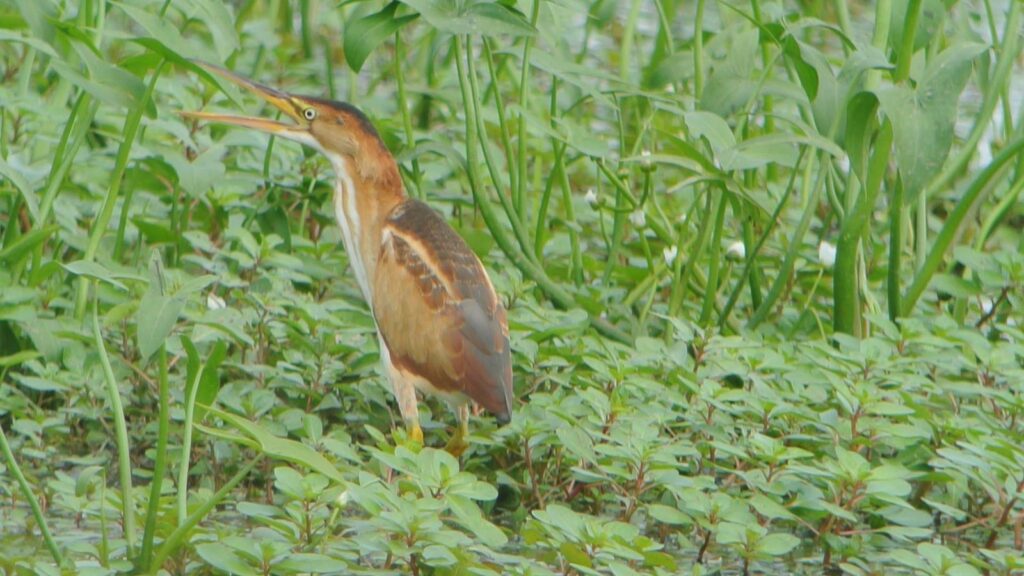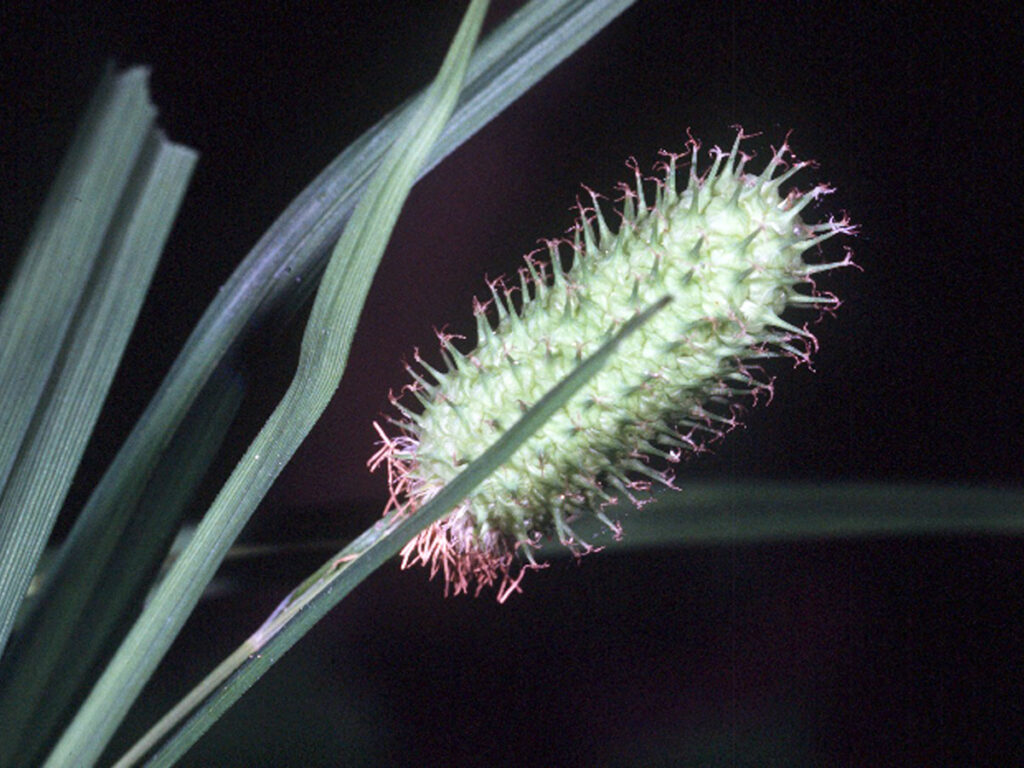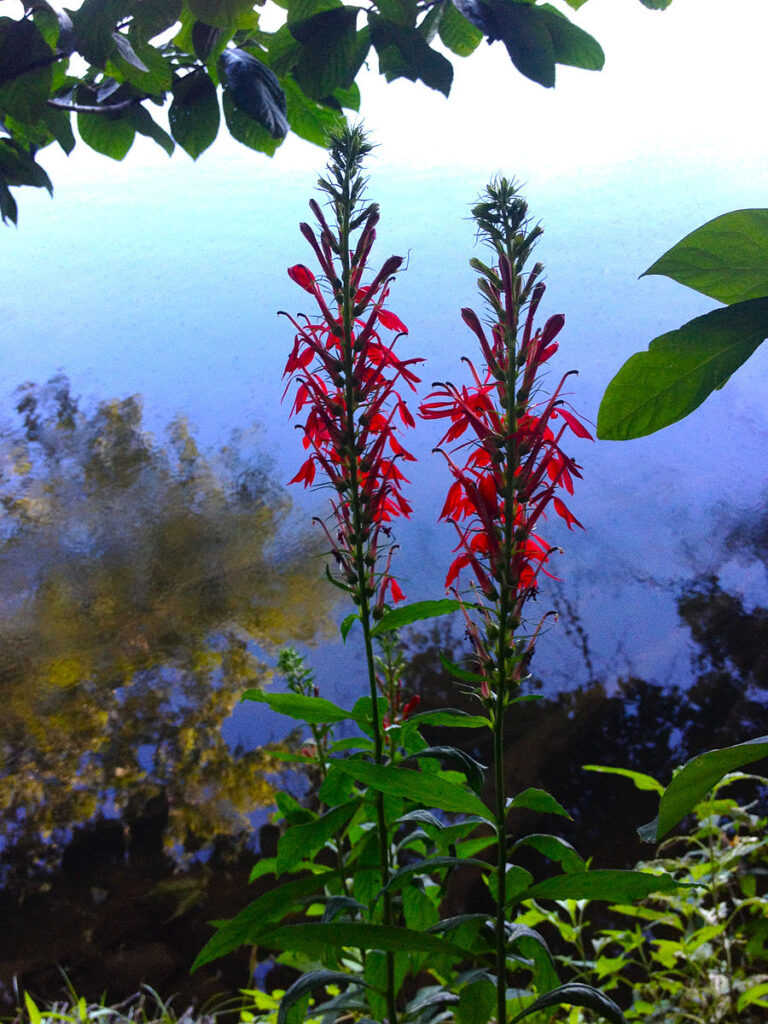Four Native Wetland Species Negatively Impacted by Purple Loosestrife

Purple loosestrife (Lythrum salicaria) is an invasive species that originated in Europe, Asia, and Northern Africa but has been present in the Eastern United States since 1830. Currently, it is present in the vast majority of the United States. According to New York Invasive Species Information purple loosestrife grows in meadows, wetlands, and other wet areas like ditches. Given its invasive nature, once introduced to one of these areas purple loosestrife grows rapidly and becomes the dominant species. This leads to a lack of diversity in the species in the wetland and reduces the habitat of native wetland species. Purple loosestrife is present in New York and the Adirondacks. Below is a map that illustrates observations of purple loosestrife in New York State and information about four native wetland species that are negatively impacted by this invasive species.

The data for this map is citizen science based and sourced from iNaturalist observations between 2006 and 2022.

- Marsh Wren (Cistothorus palustris)
While the marsh wren is not considered endangered or threatened the prevalence of their wetland habitat has been declining. The growth of purple loosestrife also decreases the birds’ options for nesting. The marsh wren make its nests in cattails which have a tall vertical structure. Purple loosestrife has a shrubby structure which is not compatible with marsh wren nests. The marsh wren is known to destroy the nests of other marsh wrens near them in order to have access to more resources.

- Least Bittern (Ixobychus exilis)
The least bittern is a member of the heron family and is considered a threatened species in New York and listed as a “bird of conservation concern” by the US Fish and Wild Life Service. Like the marsh wren, least bitterns make their nests in cattail marshes. This is a habitat that is threatened by purple loosestrife as it outcompetes cattails and lowers the water table. The loss of nesting habitat further threatens the least bittern. The New York Department of Environmental Conservation states that invasive species management is necessary to reduce further population declines.

- Cat-tail Sedge (Carex typhina)
Cat-tail sedge is endangered in the state of New York. Cat-tail sedge is present in swamps, marshes, wet forests, vernal pools, and meadows. It shares multiple habitats with purple loosestrife which leaves it vulnerable to being outcompeted by the invasive species. Currently, there are only six populations of cat-tail sedge in the state of New York according to the New York Natural Heritage Program.

- Cardinal Flower (Lobelia cardinalis)
Cardinal flower is found in wetlands in New York. It is considered an “exploitably vulnerable native plant” due to loss of wetland habitat and over picking. It is also pollinated by the ruby-throated humming bird which is the only hummingbird that breeds in North America.
Wetlands are incredible habitats that support a wide diversity of life. The species above are just four of many species that are negatively impacted by the encroachment of purple loosestrife on their habitats. The problem of purple loosestrife invading wetlands is just one example of an invasive species disrupting native species and their habitats. The work we do surveying for Hemlock Woolly Adelgid and aquatic invasive species helps to limit the impacts of invasive species on native species.
Sources
https://www.dec.ny.gov/animals/85205.html
https://ase.tufts.edu/biology/labs/reed/documents/pub2012TaverniaImpactOfPurple.pdf
https://nyis.info/invasive_species/purple-loosestrife/
https://guides.nynhp.org/cat-tail-sedge/
https://wildadirondacks.org/adirondack-wildflowers-cardinal-flower-lobelia-cardinalis.html
https://guides.nynhp.org/shallow-emergent-marsh/
Image Credits (in order of Appearance)

Leave a Reply